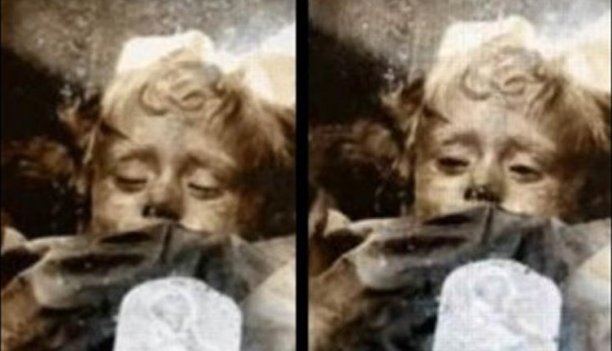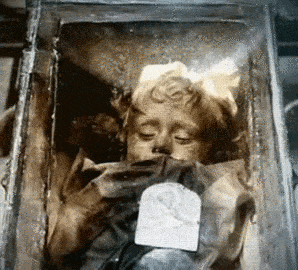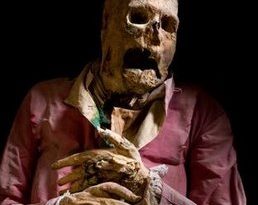“Sleeping Beauty”, The Spooky Mummy still blinks Eyes
See more at: http://en.wikipedia.org/wiki/Rosalia_Lombardo
They call her Sleeping Beauty, the worlds most beautiful mummy. Rosalia Lombardo died from pneumonia in 1920 at the tender age of 2. She Died Nearly 100 Years Ago. So Why Does She Still Open Her Eyes In Her Coffin?
One of the last bodies laid to rest in the Catacombs of the Capuchin monks of Palermo, Italy, was Rosalia Lombardo. Her preserved corpse is the most famous of the 8,000 bodies once found in the catacombs. Only two years old when she died on December 6, 1920, apparently of a bronchial infection, Rosalia has gained fame because of the excellent preservation of her body. She is often referred to as “The Sleeping Beauty.”+
Nearly 100 years after her death, Rosalia has changed little. Still sealed inside her tiny glass coffin, Rosalia sleeps, her little head pokes above a fading silk blanket. Tuffs of blonde hair still flow down her cheeks, a silk bow still tied firmly around her head. The only sign time has passed is an oxidizing amulet of the Virgin Mary which rests atop Rosalia’s blanket. It’s so faded, it’s almost unrecognizable. This is the Rosalia Lombardo, the famous child mummy.

While most of the mummies buried in the catacombs were treated by the monks and basically desiccated by the dry environment, Rosalia was mummified artificially. To preserve her for eternity, Rosalias heartbroken father turned to embalmer Alfredo Salafia, a Sicilian taxidermist and embalmer who died in 1933. Salafia never revealed the chemicals used in his preservative.
In 2009 Piombino-Mascali found a handwritten manuscript in which Salafia listed the ingredients used to mummify Rosalia. The formula read: one part glycerin, one part formalin saturated with both zinc sulfate and chloride, and one part of an alcohol solution saturated with salicylic acid.
The procedure was very simple, consisting of a single point injection without any drainage or cavity treatment. The concoction worked perfectly. Formalin killed bacteria, glycerin kept her body from overdrying, salicylic acid killed fungi, while zinc salts basically petrified Rosalias body. The new glass case will help preserve Rosalia for many more years. It was designed to block any bacteria or fungi. Thanks to a special film, it also protects the body from the effects of light, Piombino-Mascali said.
Her embalmer was Professor Alfredo Salafia, an Italian chemist who discovered a way to preserve bodies using a special formula. Starting first with animals then people, Salafia perfected his process. Eventually, he embalmed his own father.
Once word spread about his special embalming abilities, the relatives of many famous people began to contact him. These included Francisco Crispi (Italian premier, whose poorly preserved body was re-constituted by Salafia in 1905) and Cardinal Michaelangelo Celesia (1904).
In 1910 he tried to launch The Salafia Permanent Method Embalming Company to assist American funeral directors. To demonstrate his technique, he came to the United States and embalmed the unclaimed body of a recently deceased man at the Eclectic Medical College in New York. According to Christine Quigley’s book, Modern Mummies (which remains the best source of information about Salafia and Rosalia Lombardo), the man “had died some ten days earlier and his body exhibited black and green areas on the face and neck. Fifteen gallons of Salafia’s embalming fluid were injected distally into the right common carotid artery without draining the blood, treating the cavities, or carrying out secondary injections.” Then the body was stored without refrigeration, though the exact location is apparently not recorded. It is safe to assume, however, that it would have been kept in a cool place
Six months later, the body was dissected. Salafia’s embalming technique had done the trick: his green and black patches on the skin had pretty much disappeared. What’s more, “The body was well-preserved, with the skin firm, and moderately hard and dry. No odor of decomposition, or fecal odor, was present, only the chemical odor of the embalming fluid.”In September 1910, a second body was embalmed in Syracuse New York. The deceased, however, had suffered from arteriosclerosis and the embalmer (Professor Achille Salomone, a nephew of Salafia) was unable to inject more than six quarts of the fluid. Six months later, when the body was dissected, attendees concluded that Salafia’s method worked wherever it was able to penetrate the tissue (which wasn’t universally possible). According to embalmers, this is still the case with injected fluid. In 1911, his company began to sell the embalming liquid to American funeral parlors.
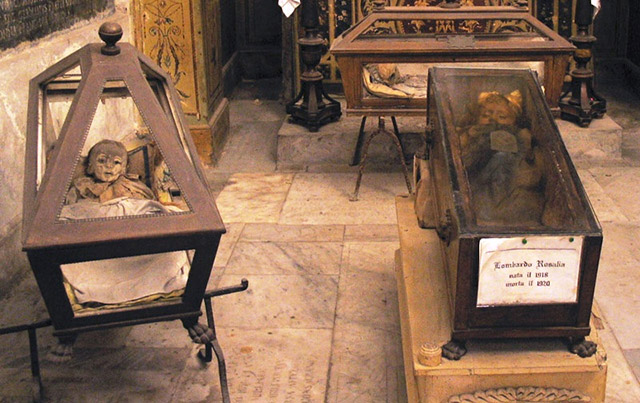
Researchers figured that Salafia’s formula was most likely an arsenic-based treatment, which was popular at the time that Salafia was perfecting his embalming process. According to the Handbook of Death & Dying by Clifton D. Bryant, Salafia was a student of Dr. Tranchini from Naples who was a proponent of arsenic-based embalming. Tranchini’s formula used one pound of dry arsenic dissolved in wine to create a two-gallon solution. It was then injected into the femoral or carotid artery. Many believed that Salafia’s method was a variation of this formula.
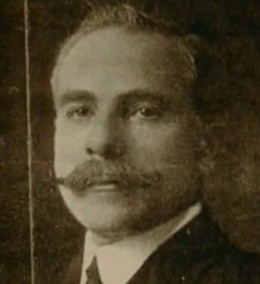
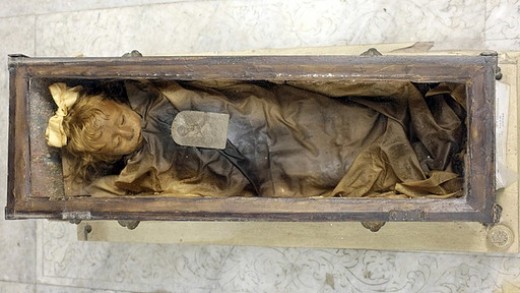
But, according to Melissa Johnson Williams, executive director of the American Society of Embalmers, “it was the zinc salts that were most responsible for Rosalia’s amazing state of preservation. Zinc, which is no longer used by embalmers in the United States. ‘[Zinc] gave her rigidity,’ Williams said. ‘You could take her out of the casket prop her up, and she would stand by herself.’ ”
